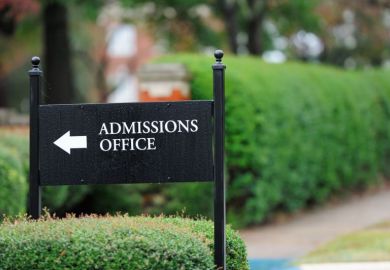A rebalancing of undergraduate admissions in the UK appears to be under way with non-elite institutions increasing their intakes during clearing.
After three years in which higher tariff institutions hoovered up the rise in 18-year-olds wanting to go to university, the 2022 cycle saw the beginnings of a return to parity with medium and lower tariff options, according to Ucas data.
Mark Corver, co-founder of DataHE and former director of analysis and research at Ucas, said there were “tentative signs” that the worst years are behind the universities that tend to attract students with lower grades.
These institutions used to admit the largest proportion of students overall but have endured a difficult decade since the removal of student number controls and the decline in demand from older students.
But early data from clearing admissions showed them taking a greater share of 18-year-olds than at any point since 2013 in England, Wales and Northern Ireland. While their share of international students was also up, their total intakes were down slightly as the number of mature students applying continued to decline.
The signs of recovery provided a glimmer of hope in an otherwise bleak financial climate that has led to these types of universities deciding to cut courses and jobs over the summer.
Mr Corver said that although it was hard to make comparisons owing to the disrupted admissions cycles during the pandemic, lower tariff providers would be buoyed by their performance so far in key “future-facing markets”.
He said one of the key reasons behind the recovery was the higher demand overall and the decision by some elite universities to limit admissions this year.
“Part of this is worsening economics around teaching UK students, but simple capacity is also a factor,” Mr Corver said.
“We calculate higher tariff providers probably need to cut intakes by 5,000-10,000 to not grow beyond capacity on campus this year, as the very large 2020 and 2021 cohorts feed through.
“In contrast, the more difficult years that some lower tariff providers have had means there is probably the capacity for an intake up to 40,000 larger than last year if every inch of space was put to work and found a willing student.”
He added that the largest ever shift downwards in those achieving the top grades, due to the regulator Ofqual’s decision to attempt to reverse pandemic grade inflation, may be another factor.
“When students got higher grades their aspirations shifted to higher tariff universities,” Mr Corver said. “Compared to last year the lower grades may lead to a broader range of universities [being] in the frame, to the benefit of lower tariff providers.”
The competitive 2022 admissions cycle has reignited a debate about the dominance of Russell Group institutions, with Mary Curnock Cook, a former chief executive of Ucas, calling the group a “hollow brand” in a blog for the Higher Education Policy Institute website. She said many “top” institutions are disregarded because they are not members owing to “plain old-fashioned snobbery of the most pernicious kind”.
Speaking to Times Higher Education, Ms Curnock Cook agreed that other universities appear to be benefiting this year from a “trickle-down effect from the more cautious offer-making” of the higher tariff institutions.
But she said any such rebalancing would only be maintained as long as the elite universities “wish to keep a voluntary limit on their recruitment, or if number controls come back in”.
Register to continue
Why register?
- Registration is free and only takes a moment
- Once registered, you can read 3 articles a month
- Sign up for our newsletter
Subscribe
Or subscribe for unlimited access to:
- Unlimited access to news, views, insights & reviews
- Digital editions
- Digital access to THE’s university and college rankings analysis
Already registered or a current subscriber?








